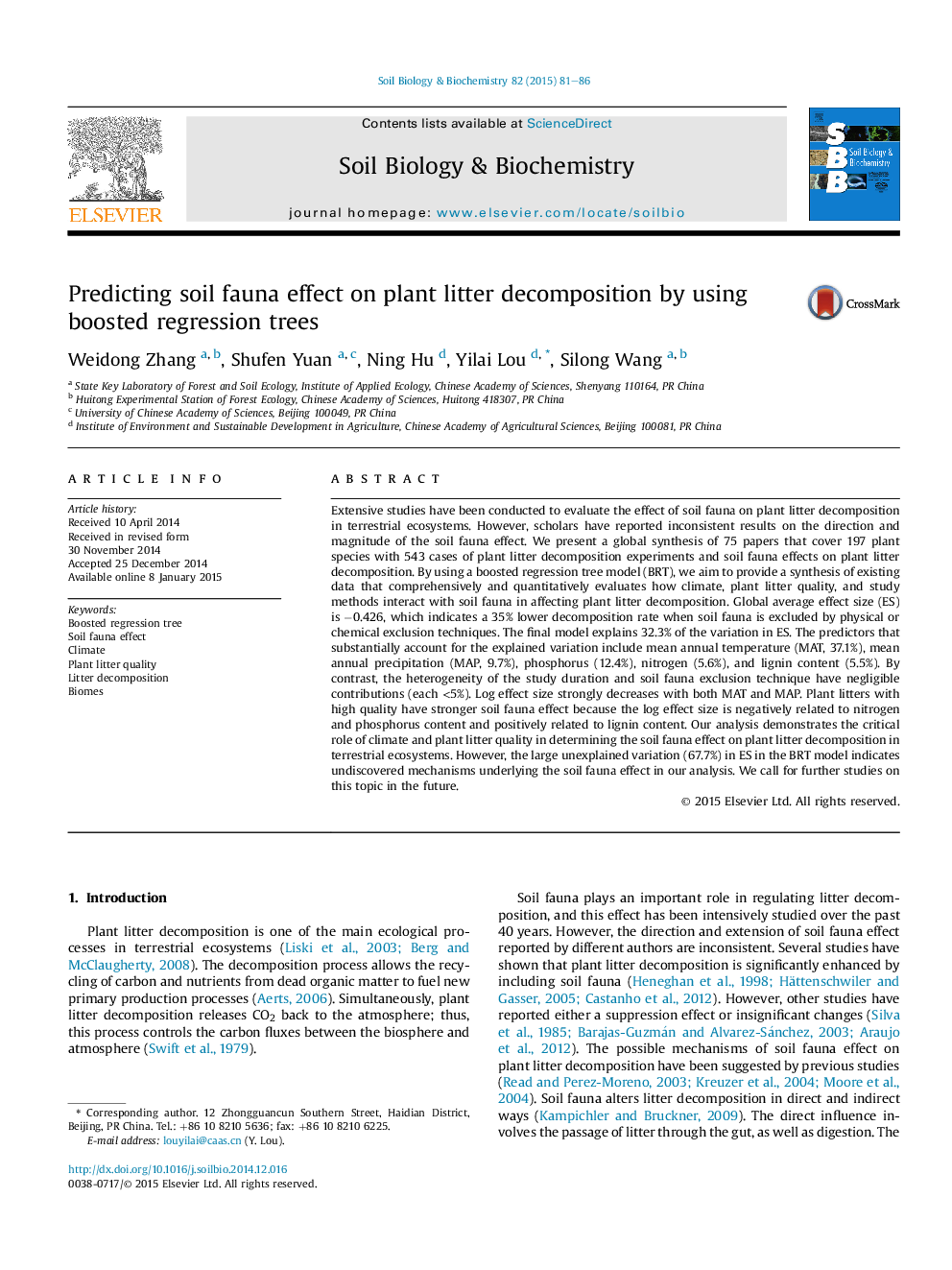| Article ID | Journal | Published Year | Pages | File Type |
|---|---|---|---|---|
| 2024484 | Soil Biology and Biochemistry | 2015 | 6 Pages |
•Soil fauna effect is regulated by both climate factors and litter properties.•MAT contributes more to explain the variation of soil fauna effect than MAP.•Soil fauna exclusion technique has negligible contribution to soil fauna effect.
Extensive studies have been conducted to evaluate the effect of soil fauna on plant litter decomposition in terrestrial ecosystems. However, scholars have reported inconsistent results on the direction and magnitude of the soil fauna effect. We present a global synthesis of 75 papers that cover 197 plant species with 543 cases of plant litter decomposition experiments and soil fauna effects on plant litter decomposition. By using a boosted regression tree model (BRT), we aim to provide a synthesis of existing data that comprehensively and quantitatively evaluates how climate, plant litter quality, and study methods interact with soil fauna in affecting plant litter decomposition. Global average effect size (ES) is −0.426, which indicates a 35% lower decomposition rate when soil fauna is excluded by physical or chemical exclusion techniques. The final model explains 32.3% of the variation in ES. The predictors that substantially account for the explained variation include mean annual temperature (MAT, 37.1%), mean annual precipitation (MAP, 9.7%), phosphorus (12.4%), nitrogen (5.6%), and lignin content (5.5%). By contrast, the heterogeneity of the study duration and soil fauna exclusion technique have negligible contributions (each <5%). Log effect size strongly decreases with both MAT and MAP. Plant litters with high quality have stronger soil fauna effect because the log effect size is negatively related to nitrogen and phosphorus content and positively related to lignin content. Our analysis demonstrates the critical role of climate and plant litter quality in determining the soil fauna effect on plant litter decomposition in terrestrial ecosystems. However, the large unexplained variation (67.7%) in ES in the BRT model indicates undiscovered mechanisms underlying the soil fauna effect in our analysis. We call for further studies on this topic in the future.
Graphical abstractResults from boosted regression tree (BRT) analysis showing the relative contributions of predictors in percentage on soil fauna effect size.Figure optionsDownload full-size imageDownload as PowerPoint slide
